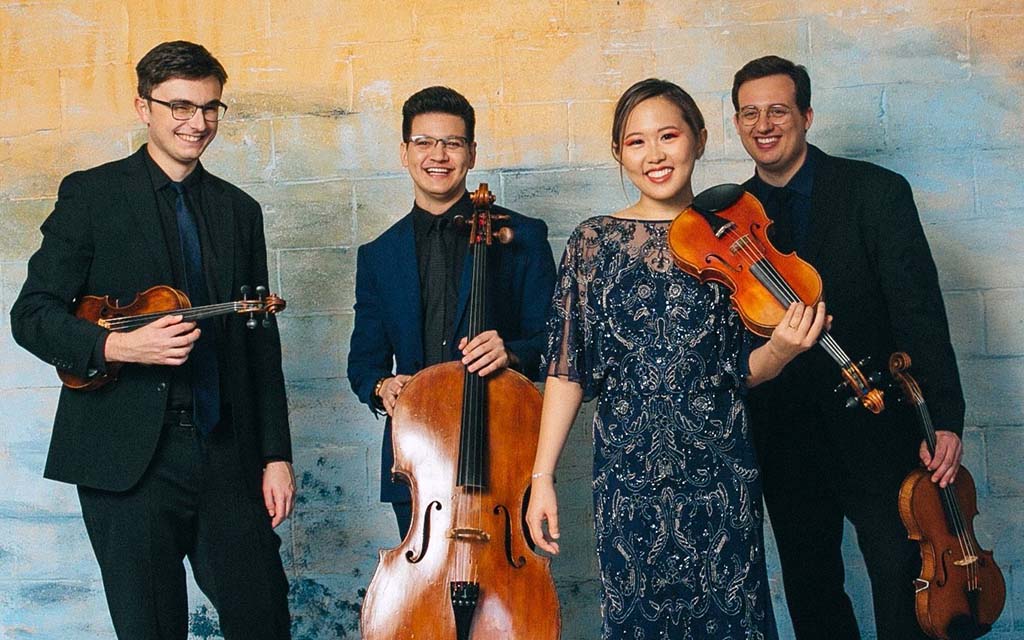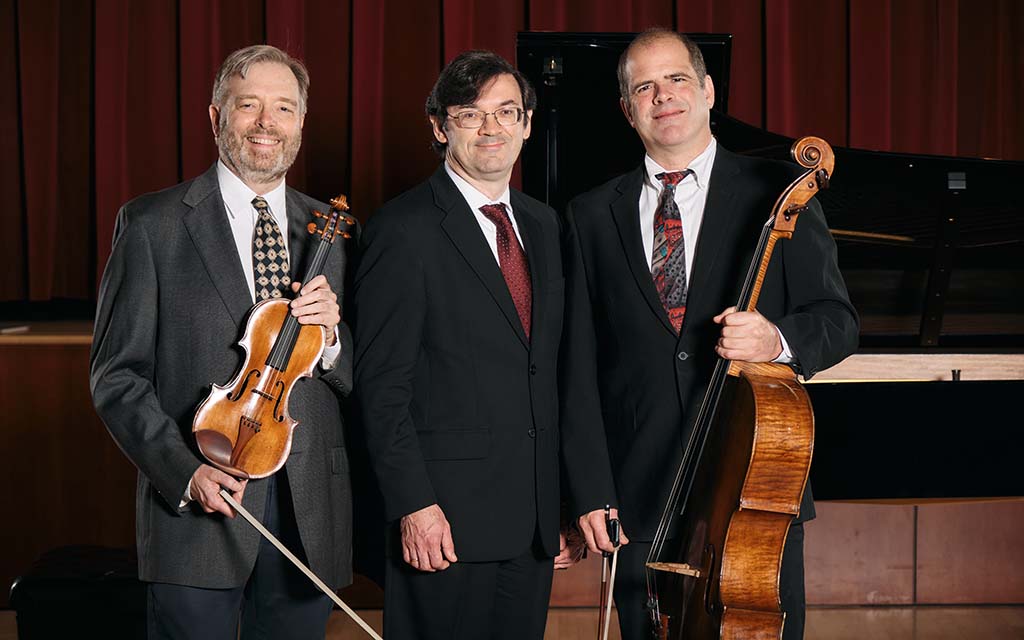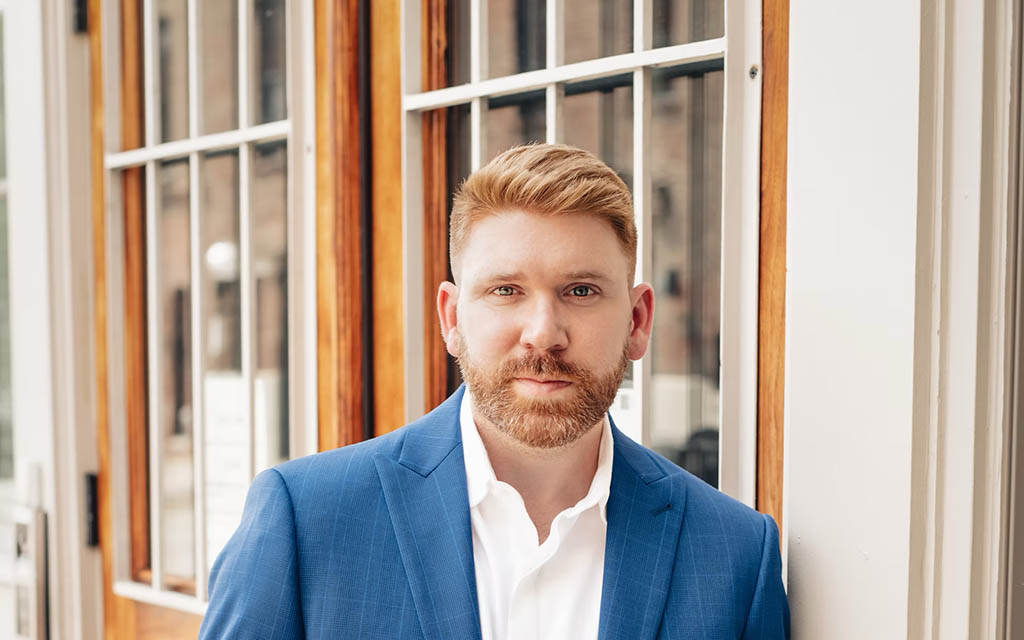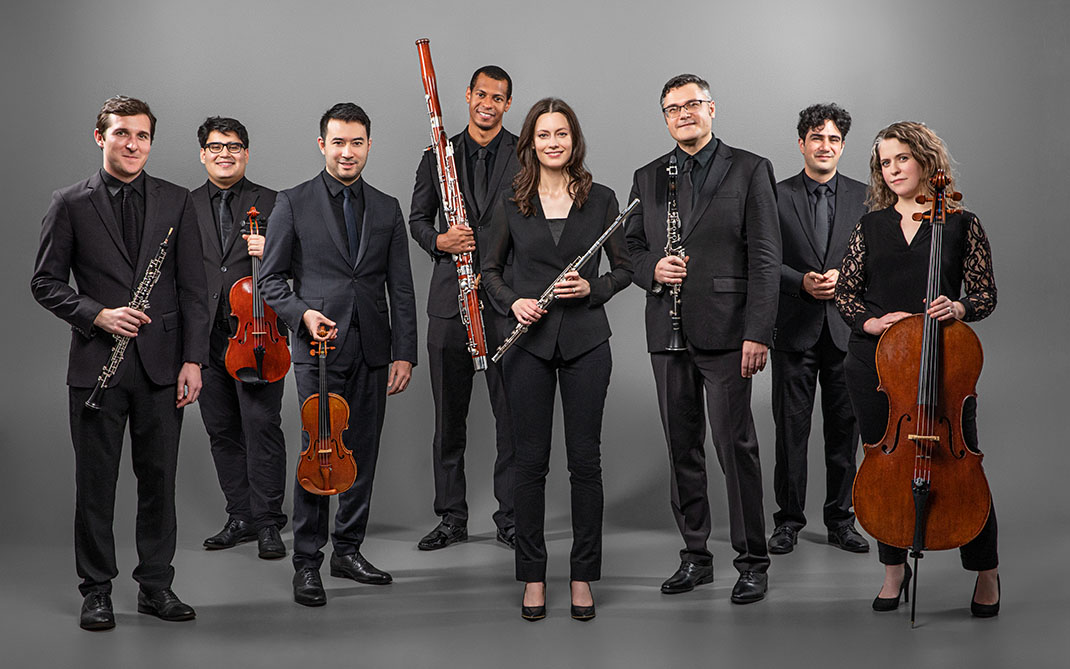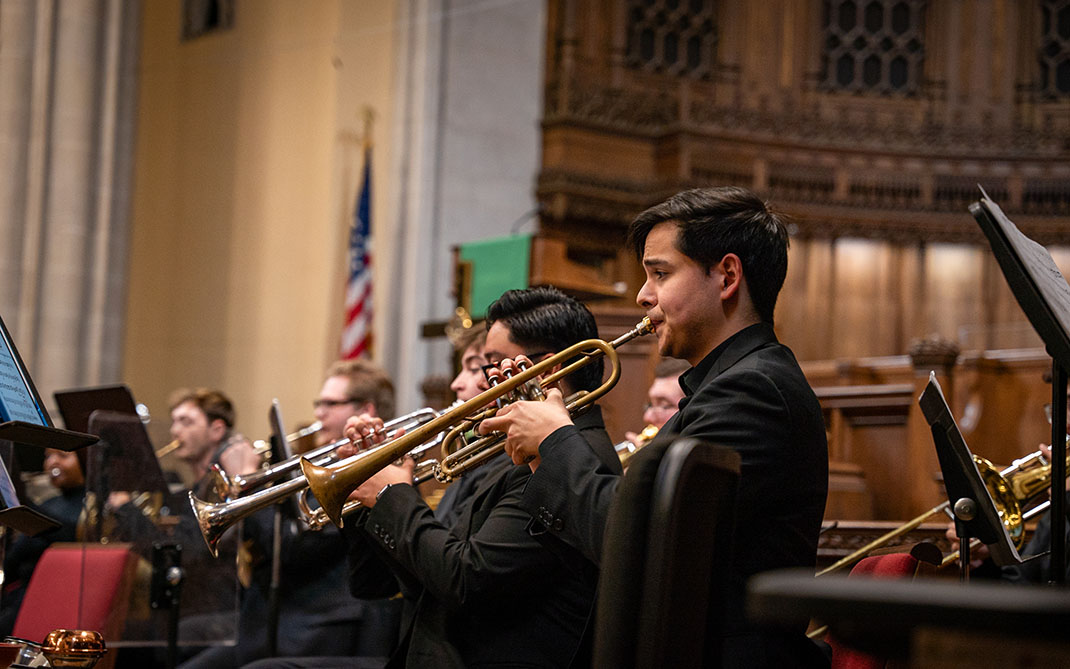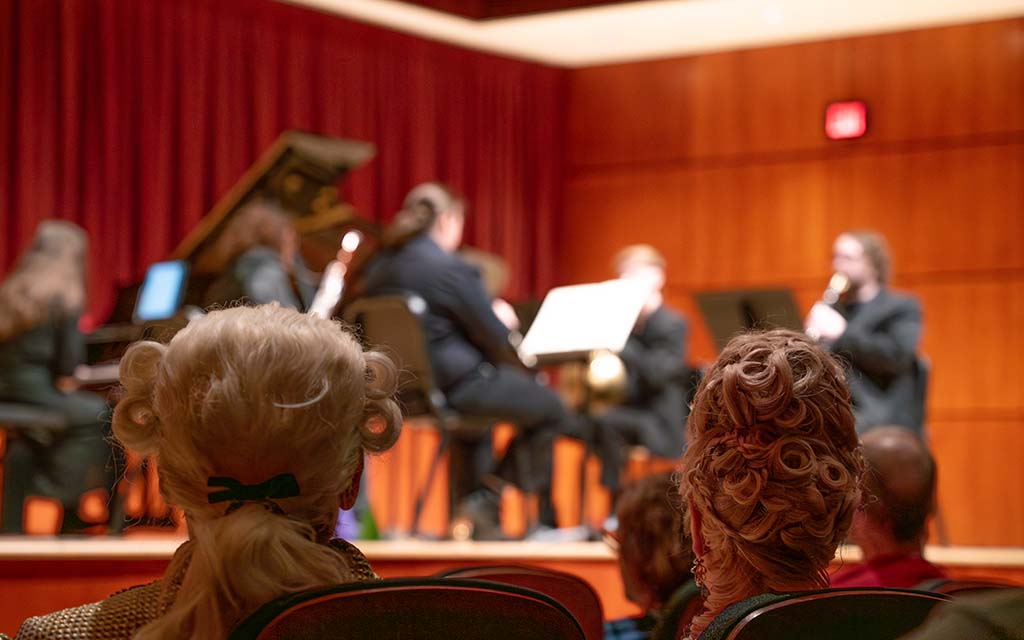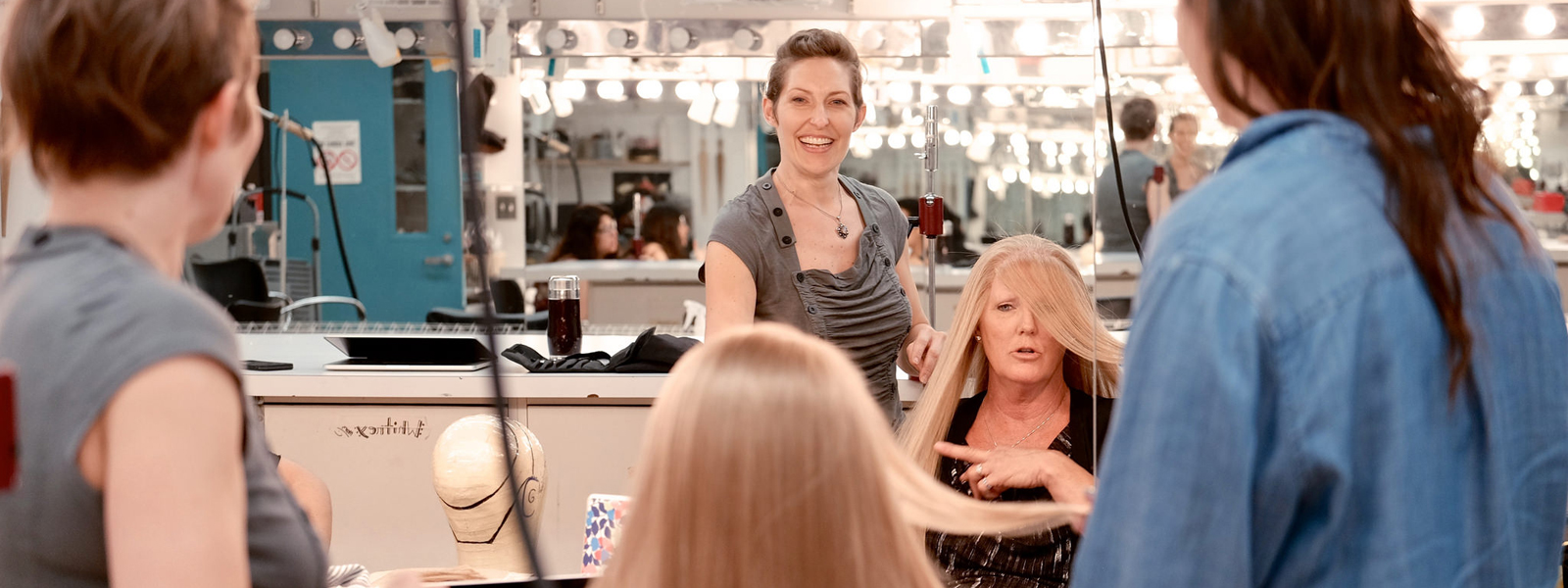Hair with a heart: Students build wigs for clients with cancer, brain tumors
Many of us have had classes that have touched our lives, but less often do we find those that let us touch the lives of others. Students in the UNCSA School of Design and Production’s Wig & Makeup Program are doing just that by using their art to give back to the community through a medical wig initiative started earlier this year.
The program began as a class in the spring semester, led and instructed by Christal Schanes, who saw a desire among her students for such a class. Schanes worked as a wig-builder for shows like “Saturday Night Live” (where she worked full-time for seven years and won an Emmy) and “The Tonight Show with Jimmy Fallon." She spends her off-time building wigs for patients with cancer, alopecia and other medical conditions. “It’s definitely something that is close to my heart,” she says.
She started thinking about incorporating medical wigs into the curriculum well over a year ago, as students were coming to her outside of class for advice and knowledge on how to build them for family members.
The students inspired me to want to make the class a reality. Once they started asking for it, it was just a matter of making it happen.
Christal Schanes
“The students inspired me to want to make the class a reality,” she says. “Once they started asking for it, it was just a matter of making it happen.”
With the help of Dean Michael Kelley, who secured a grant to help fund the class, she did make it happen. The funding made it possible for students to build high-quality, custom hand-tied wigs at no cost to 12 initial clients. Each student had a $600 budget, with donations of hair and other supplies, to build their client’s wig.
This semester, the medical wig project has expanded beyond the classroom to become a production assignment, allowing students to build wigs for medical clients year-round between their work on UNCSA performances.
“We have big hopes and dreams for this,” Schanes says. The program is currently seeking funding to get the production assignments off the ground. The ultimate goal, Schanes adds, is to help as many clients as possible.
The spring class has already had a lasting effect on students. In fact, graduate student Uriel Najera pursued medical wig work this past summer after completing the class. He received a grant from the Semans Art Fund, which provides funding to current UNCSA students for innovative and special projects, study, research and performances.
He used the funds to build three more medical wigs for clients through Novant Health. He sees this, he says, as a potential career in the future.
“You never think of wigs as benefitting people,” he says. “But what I’ve realized
is that it’s definitely the little things that can change someone’s life.”
Connecting with Clients
So many of our patients lose a lot of what makes them feel like a woman ... Their hair is important. Helping them maintain their body image is a huge part of treatment.
Candiss Vestal, Radiation Oncology Nurse
It’s almost unheard of for patients with cancer and other medical conditions to be able to afford custom wigs of the quality provided by the Wig & Makeup Program, as insurance does not typically cover the cost.
Each of the wigs is made from human hair (which can be washed and styled) and shaped specially for each client's head. They are “light as air,” according to the clients, and with a third of the material of manufactured wigs, they are highly breathable — essential for those with sensitive scalps.
The minimum cost for such a wig starts at $3,500 for materials and time, requiring between 80-125 hours of labor to manually tie the estimated 100,000 knots that go into a wig.
Nurses April Crissman and Candiss Vestal can attest to the impact a high-quality, cost-free wig has had on some of their patients in the Radiation Oncology Department at the Novant Health Derrick L. Davis Cancer Center.
“Most patients can’t afford to pay for a wig,” Crissman says. “They are already spending so much on treatment.” And even if a wig is affordable, it’s not typically made with a patient’s specific needs in mind and tends to become easily matted and unmanageable.
The fact that the class was able to provide the wigs to the patients free of charge has been a huge relief to the clients, she adds.
Crissman and Vestal have taken the lead on pairing patients at the Cancer Center with the Wig & Makeup Program. They were connected to Schanes through Beth Miller, a medical physicist in the Radiation Oncology Department, for whom Schanes had made a wig nearly 15 years ago.
“So many of our patients lose a lot of what makes them feel like a woman,” Vestal says. “Their hair is important. Helping them maintain their body image is a huge part of treatment.”
For three student and client pairs in the spring class, building and receiving the wigs had quite the impact. Below are their stories:
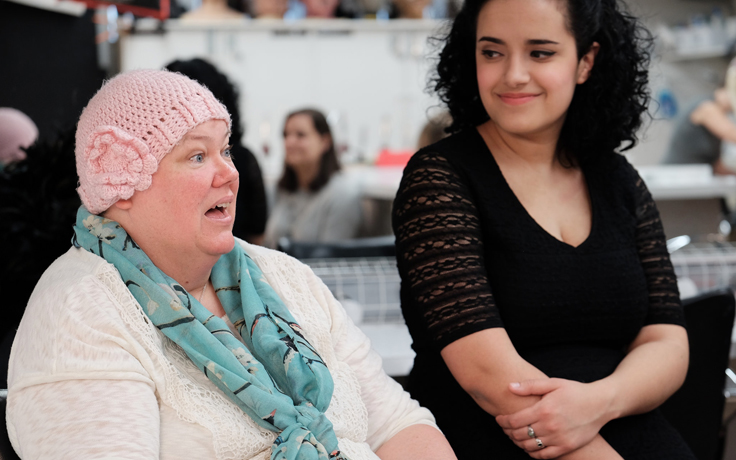
Teresa Sisk (left) and Arianna Zapata.
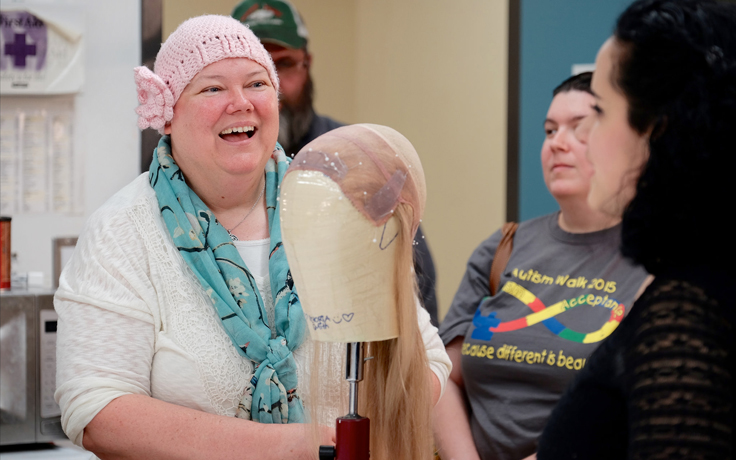
Sisk with her nearly-completed wig.
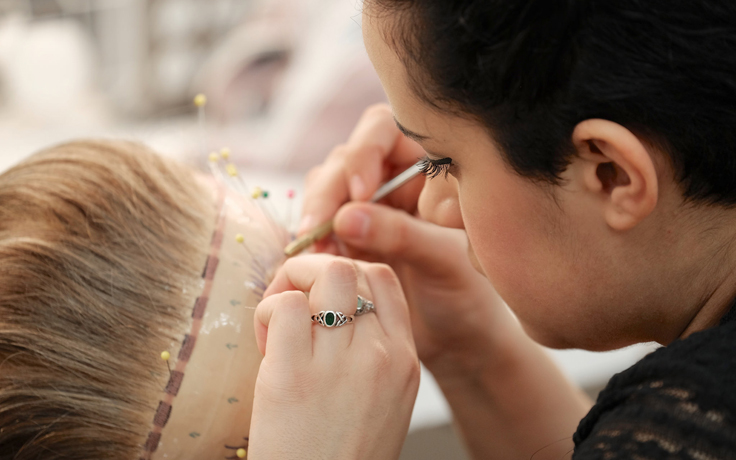
Zapata hard at work building Sisk's wig.
In August 2015, Teresa Sisk had what she thought was a serious sinus infection. “I went to the doctor three times,” she says, with an array of symptoms ranging from headaches and dizziness to more alarming signs like vision loss. “Finally I had such an excruciating headache, I told my husband, ‘I’ve got to do something.’ ”
That something was a trip to the emergency room, a series of CAT scans and MRIs, and a diagnosis of glioblastoma, a type of brain tumor that had moved her brain nearly half an inch. Within 48 hours, Sisk was in the operating room undergoing surgery.
As soon as she woke up from surgery, “I felt 100 percent better.” She remembers looking at a calendar in the operating room and noting the date: Sept. 1, 2015. “I thought to myself, ‘This is the first day of the rest of my life.’ ”
Surgery was just the beginning of Sisk’s treatment for glioblastoma, which included both radiation treatments and chemotherapy.
She had one of the more commonly known side effects of such treatment — hair loss. Faced with the uncertainty that her hair may not grow back, at least not the same or for some time, she decided to try a wig. She was put forward as a candidate for the Medical Wig class and paired with Arianna Zapata.
Zapata, like most of the students in the class, was interested in the course almost as soon as she heard about it. More than just learning a different technique for wig building, she was interested in finding a way to give back.
“It’s really awesome that I get to use these skills to help someone,” she says.
“I wanted real hair, something breathable,” Sisk says of her initial consultation with Zapata and Schanes at the beginning of the semester.
Her inspiration was journalist Deborah Norville, with a style and color similar to her own. In fact, Zapata incorporated much of Sisk’s own hair, cut at the beginning of her treatment, around the front of the wig, the part that frames Sisk’s face.
It’s hard to put into words the impact something as seemingly simple as a wig can have. “It’s not really vanity. Your hair is a part of who you are,” Sisk says. “I’m just so thankful the students are able to do this for people like me to help us feel whole again."
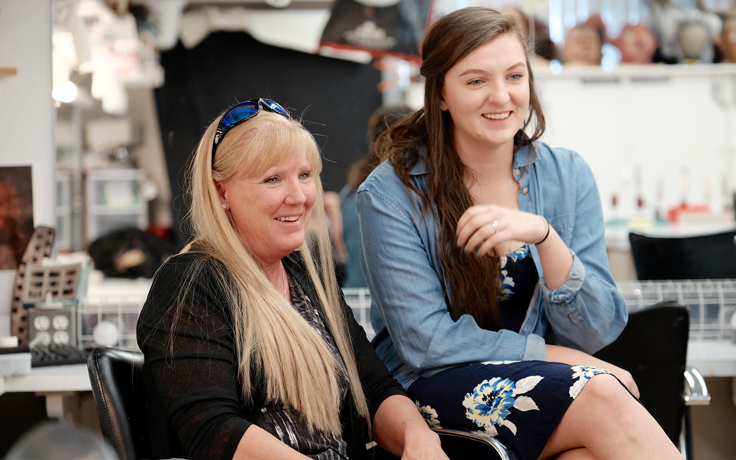
Susan Barbour (left) and Emily Young.
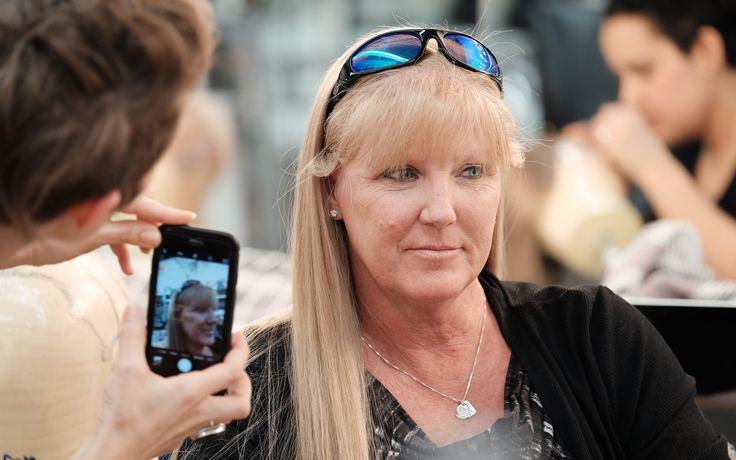
Instructor Christal Schanes taking photos at Barbour's final fitting.
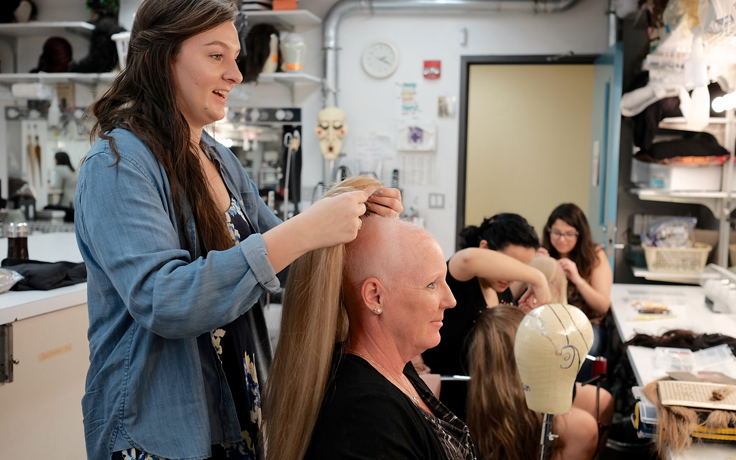
Young helping Barbour try on her wig during the final fitting.
Susan Barbour strolls with purpose into the Wig & Makeup studio for a final fitting with her sunglasses propped on top of her head. It was her favorite way to hold back her long blonde hair before she started chemotherapy treatments for cancer.
In July 2015 her doctor found three tumors growing in her breast tissue. They turned out to be a rare and serious type of cancer. Now in remission, Barbour is open about the hardships she faced following her diagnosis — the shock of learning she had cancer and wondering why this happened to her at all.
“I was perfectly healthy before all of this,” she says. “When I found out, I was in shock. I thought, ‘This is not happening.’ ” The transition from living an every day life to dealing with a cancer diagnosis and regular chemo sessions was rocky, particularly when she began to lose her hair.
For years, her long blonde locks were her pride and joy. “That was my sexy,” she says with a smile. She would have her stylist add diamond dust to her hair for extra luster and shine. “You could hardly look at it, it was so shiny.” Visits with her young granddaughter were spent brushing and admiring their hair together.
But within days of starting chemo, “it was falling out in clumps,” Barbour says. Finally, she made the difficult decision and asked her hairdresser of nine years to shave her head.
So it’s not surprising that when she had the opportunity to become a client for the Medical Wig class, she asked for something that looked like her natural hair. “I wanted to look like me,” she says.
When she walks into the Wig & Makeup studio for the final fitting of the wig, her hair is just starting to grow back. She seems strong and confident in the look but wastes no time getting comfortable in her new wig built by Emily Young.
For Young, the process of building the wig was a learning experience, not just from a technical standpoint but from the client’s perspective as well. “You have to really take into account what the client wants in a way that you don’t have to consider when you’re making entertainment wigs,” she says. “She is going to be wearing this all the time.”
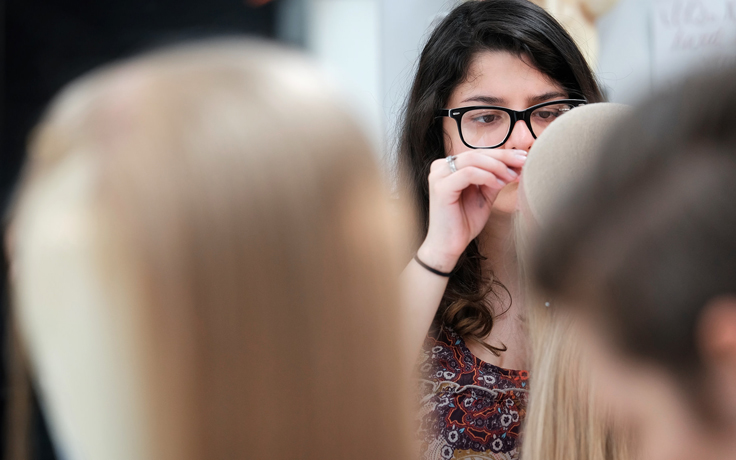
Lisa Pedraza working on the wig she built for client Victoria Smith.
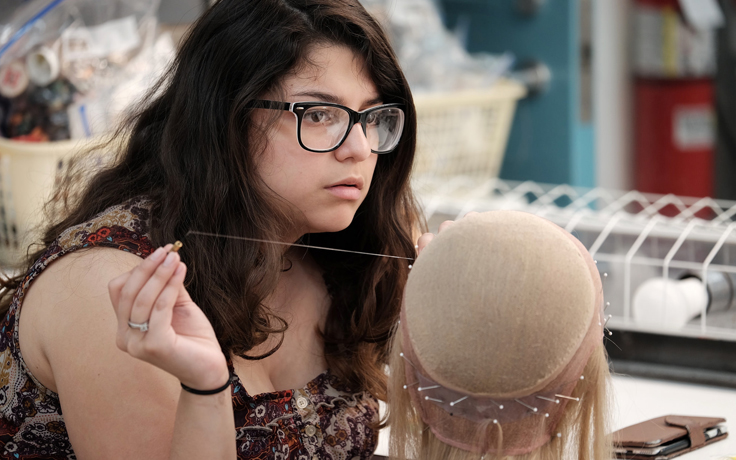
Pedraza at work.
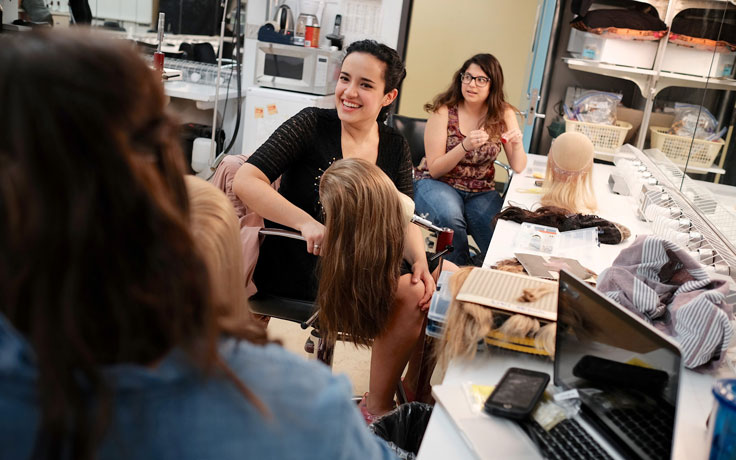
Young, Zapata and Pedraza working in the wig studio.
Lisa Pedraza considers herself lucky to have gotten into the Medical Wig class last spring. “At the last minute we got a new client,” she says. Victoria Smith, who received a breast cancer diagnosis last year, brought with her a positive energy that touched the whole class.
“I just love her,” Pedraza says. “There is a light in her. Every time she talks, people stop and listen to her.”
The positive attitude, Smith says, comes in part from the perspective cancer has provided her. “My life has changed so much for the better. I’m happier, healthier. I do clean eating, run almost every day.”
In January 2015, she felt a lump in her breast. Her doctor assured her it was a cyst and would eventually go away, but at her annual physical six months later the lump had gotten larger.
“I knew in my heart that something was wrong,” she says. A mammogram was ordered (which came back clean) and then, at Smith’s insistence, she had an ultrasound that detected the Stage 1 breast cancer.
She chose to have a bilateral mastectomy and began intense rounds of chemotherapy and radiation, shaving her hair little by little as she went. By the time she became a client for the Medical Wig class, Smith had essentially given up on the idea of getting a wig after some unsuccessful shopping trips with her husband. “I tried on a few,” she says, “but I said, ‘This is not me. I can’t do a wig.’ ” Nothing felt natural.
But when she found out that the wig provided by the class would be custom built to fit her head and facial features and would look more like her natural color and style, she decided to give it a try.
“Lisa made me feel so comfortable from the get-go,” Smith says. “She was so amazing to work with and so passionate.”
“It’s awesome what the class is doing for people who are going through cancer and losing their hair. It’s a very traumatic process. It is important to help build confidence and self-esteem again.”
For Smith, that trauma and the strength it takes to get through it have been her motivation. “Other patients have been my strength and motivation,” she says. “When I would go to radiation, I would go in and talk to everyone, give them a smile. I have met so many brave women going through the same thing.”
October 10, 2016
